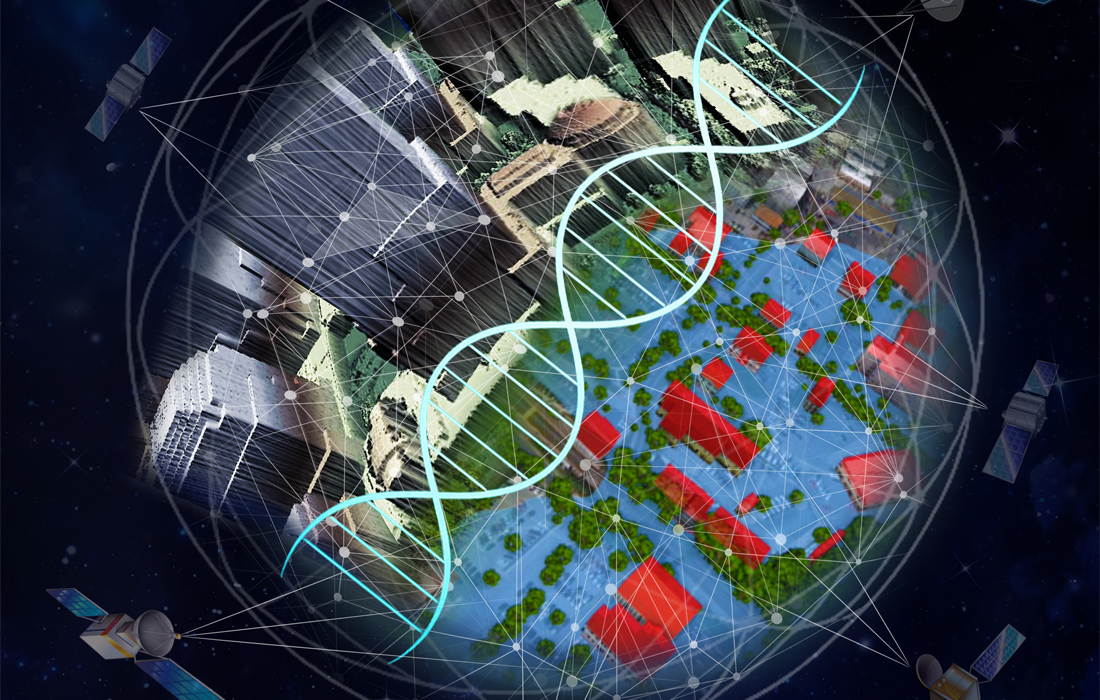Kaleigh Harrison
Most climate models focus on what’s happening to the planet — rising heat, melting ice, shifting weather. But new research from the Advanced Science Research Center at The CUNY Graduate Center (CUNY ASRC) suggests we should be looking at what’s happening within the planet’s biological systems instead.
The study introduces CBS3 — the Climate BioStress Sentinel System — a framework designed to detect biological stress signals across ecosystems, human populations, and infrastructure. These signals, ranging from molecular changes in microbes to behavioral shifts in urban populations, may surface well before a system visibly fails.
Biological stress manifests across species and environments:
Trees and corals encode years of climate impact in growth patterns.
Amphibians, due to their sensitivity, act as early bioindicators.
Lichens respond in real time to air quality and temperature changes.
Microbes and phytoplankton regulate gases critical to climate balance.
This shift reframes biology not just as a passive climate victim, but as a functional sensor network. By treating living systems as part of global monitoring infrastructure, CBS3 turns ecology into a practical asset for forecasting and managing climate risks.
For businesses, this offers a new form of early intelligence: a signal that can pre-empt market shocks, supply chain delays, or infrastructure failures triggered by climate-driven stress — before they fully unfold.
From Raw Data to Risk Intelligence: The Role of CBS3
What makes CBS3 distinct is its ambition to scale beyond traditional ecological monitoring. The model integrates data from living systems, human behaviors, and built environments — forming a multi-layered stress detection system using technology already in circulation.
The framework draws on:
Genomic and physiological data
Environmental sensor networks
AI and systems modeling
Socioeconomic and urban infrastructure data
Unlike static data collection efforts, CBS3 is designed for dynamic, real-time analysis. It anticipates the use of microsensors — embedded in homes, offices, and even personal devices — to anonymously contribute environmental and physiological information. Think of it as a distributed diagnostics network for planetary stress.
The idea is to create an early-warning layer for climate-related disruptions — not just extreme weather, but systemic strain on health systems, agriculture, urban resilience, and energy infrastructure. That level of foresight could be critical for industries with long planning horizons or high climate exposure.
For sectors like insurance, utilities, public health, smart cities, logistics, or food production, CBS3 proposes a proactive model: detect biological stress before it escalates into a systemic problem. In a world where delayed responses often define climate impact, this could be the edge that defines resilience.
